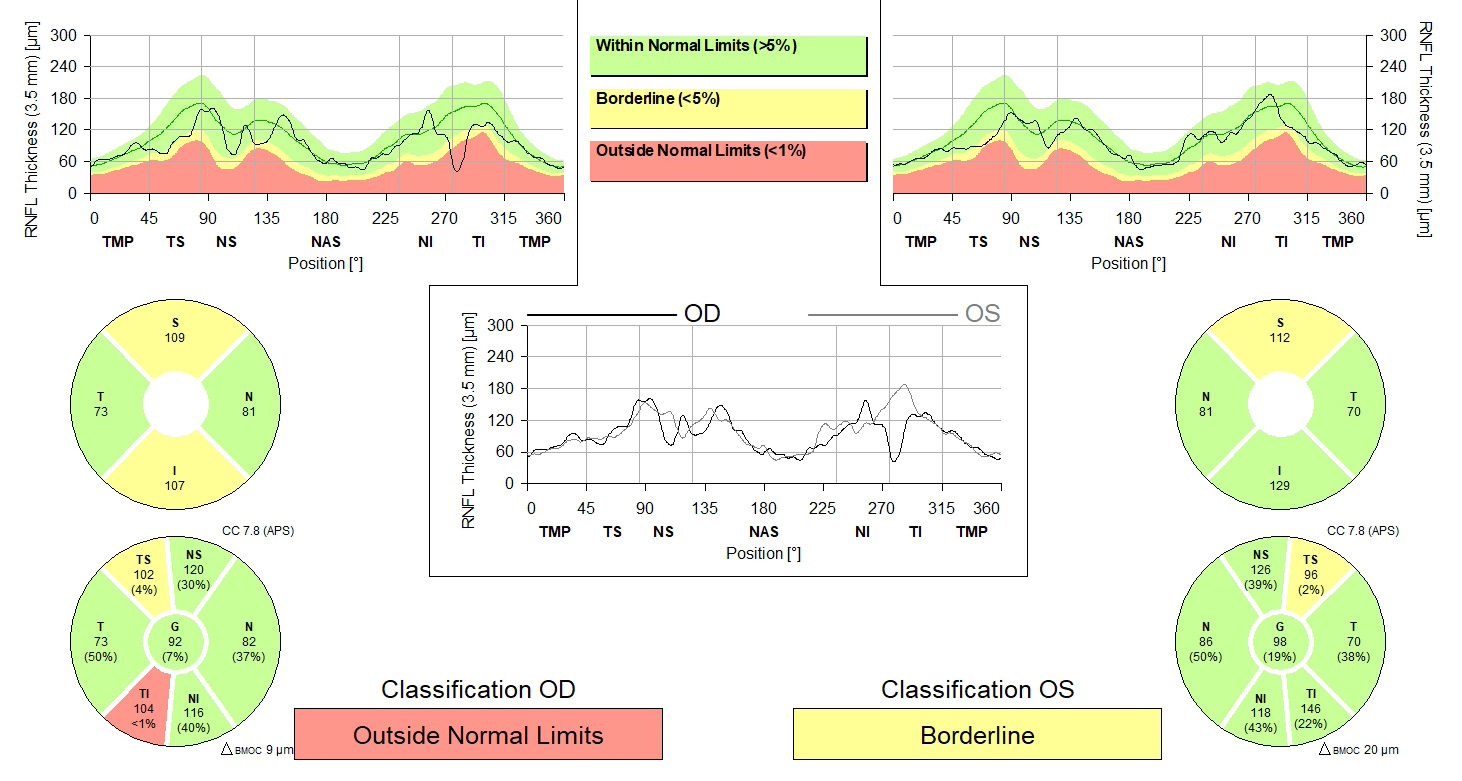 |
|
Researchers discovered that cataract patients with abnormal OCT RNFL scans were older than patients with normal OCT RNFL scans, predominately male, had higher baseline intraocular pressure levels and lower mean RNFL thickness values. Photo: Heidelberg. Click image to enlarge. |
Among the challenges in glaucoma management is the condition’s persistent high rate of underdiagnosis, given its absence of symptoms early on and the lack of routine eye care in many populations. Cataracts, by contrast, do readily manifest symptoms that prompt individuals to seek care. Could screening all cataract surgery patients for glaucoma pick up a substantial number of undiagnosed glaucoma cases? That was the premise of a recent study.
Researchers from Jerusalem evaluated the clinical significance of preoperative OCT of retinal never fiber layer (RNFL) thickness to better identify and manage glaucoma in cataract patients scheduled for surgery. They compared their research to preoperative fundus biomicroscopic examinations originally conducted by each patient’s referring ophthalmologist. The outcomes measured in this study were the number of newly detected cases of glaucoma after reviewing OCT findings and the subsequent changes to patient management.
A total of 486 cataract patients were selected and observed for this study. After screening with OCT, researchers noted that 23% of these patients exhibited abnormal RNFL. Such findings can be attributed to multiple ocular morbidities, such as high myopia with extensive parapapillary atrophy, significant macular degeneration, a history of non-ischemic or ischemic optic neuropathy, and glaucoma. A total of 16.7% of subjects were suspected to have glaucoma based upon their OCT RNFL findings, while the remaining 6.4% were eliminated from the study as their abnormal OCT RNFL findings were attributed to other ocular morbidities.
After the researchers examined OCT RNFL findings, the suspected glaucoma patients were then evaluated by a glaucoma specialist. A total of 44 patients (9%) were newly diagnosed with glaucoma or remained as glaucoma suspects. The management options changed for these patients, since they were initially diagnosed with cataracts and not glaucoma. Due to the prevalence of glaucoma in these cataract patients, 5.1% were ordered to undergo routine glaucoma follow-up visits, 2.5% began intraocular pressure–lowering treatment, and seven patients (1.4%) opted for combined cataract-glaucoma surgery.
Several limitations were cited in this study. Besides observing a small cohort at a single tertiary referral center, researchers found that patients scheduled for cataract surgery may provide poor quality OCT scans, which would impede the ability to perform informative OCT RNFL scans. Additionally, errors can occur with OCT RNFL thickness, which the researchers attempted to mitigate by using an algorithm and glaucoma specialists during examination. Not all clinical settings will have access to glaucoma specialists, and the cost-effectiveness of OCT RNFL scans was not observed, so researchers believe more studies will need to be conducted to better understand the feasibility of using this tool in different settings.
“It is important to note that we do not suggest OCT RNFL thickness as a standalone diagnostic tool for glaucoma,” the researchers noted in their study. “However, its utilization within this specific patient subset enhanced the overall detection of glaucoma.”
Goldberg M, Zadok D, Assayag E, et al. Refining glaucoma diagnosis and treatment in cataract surgery candidates: The contribution of preoperative OCT RNFL. Journal of Cataract and Refractive Surgery. April 24, 2024. [Epub ahead of print]. |


